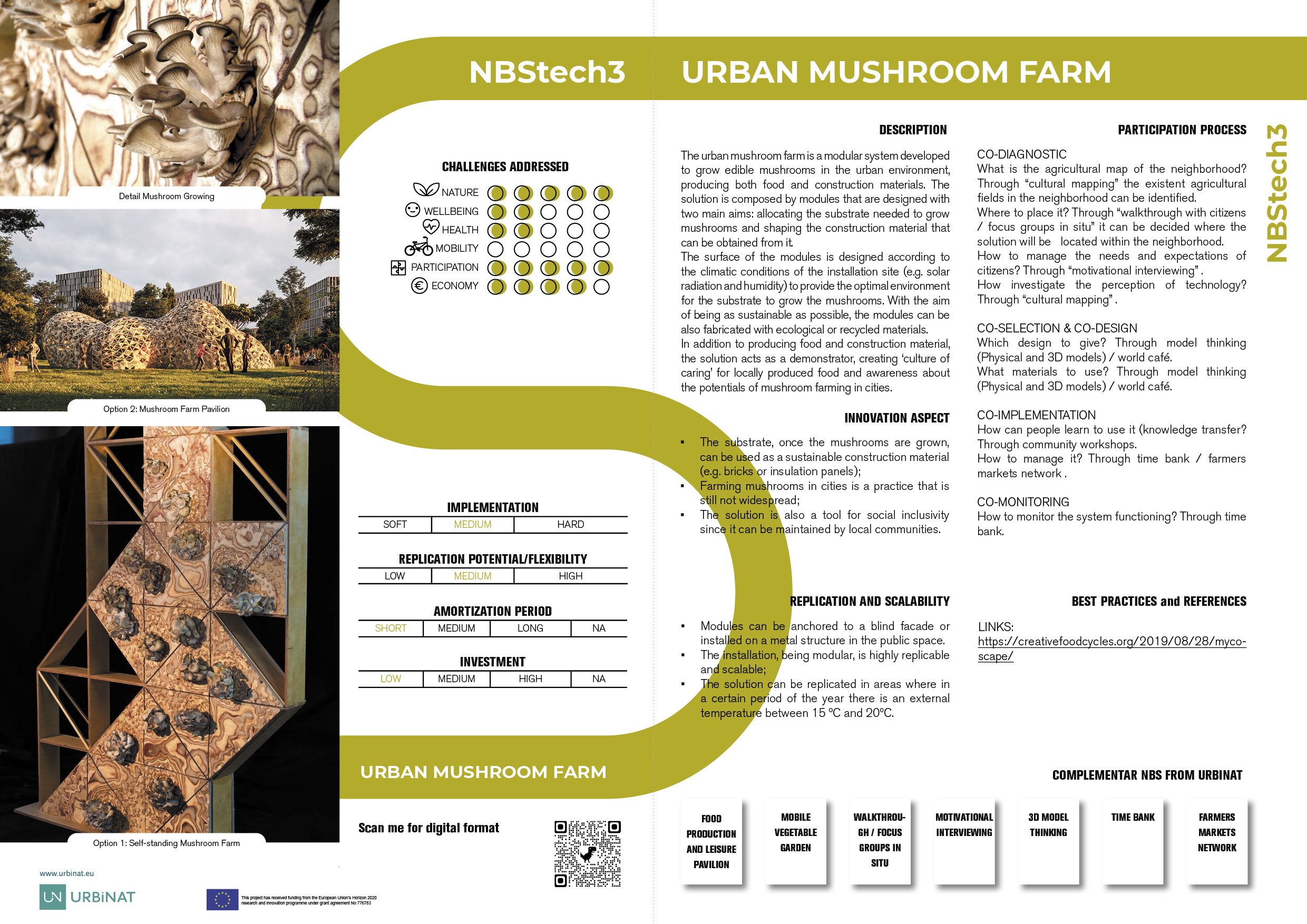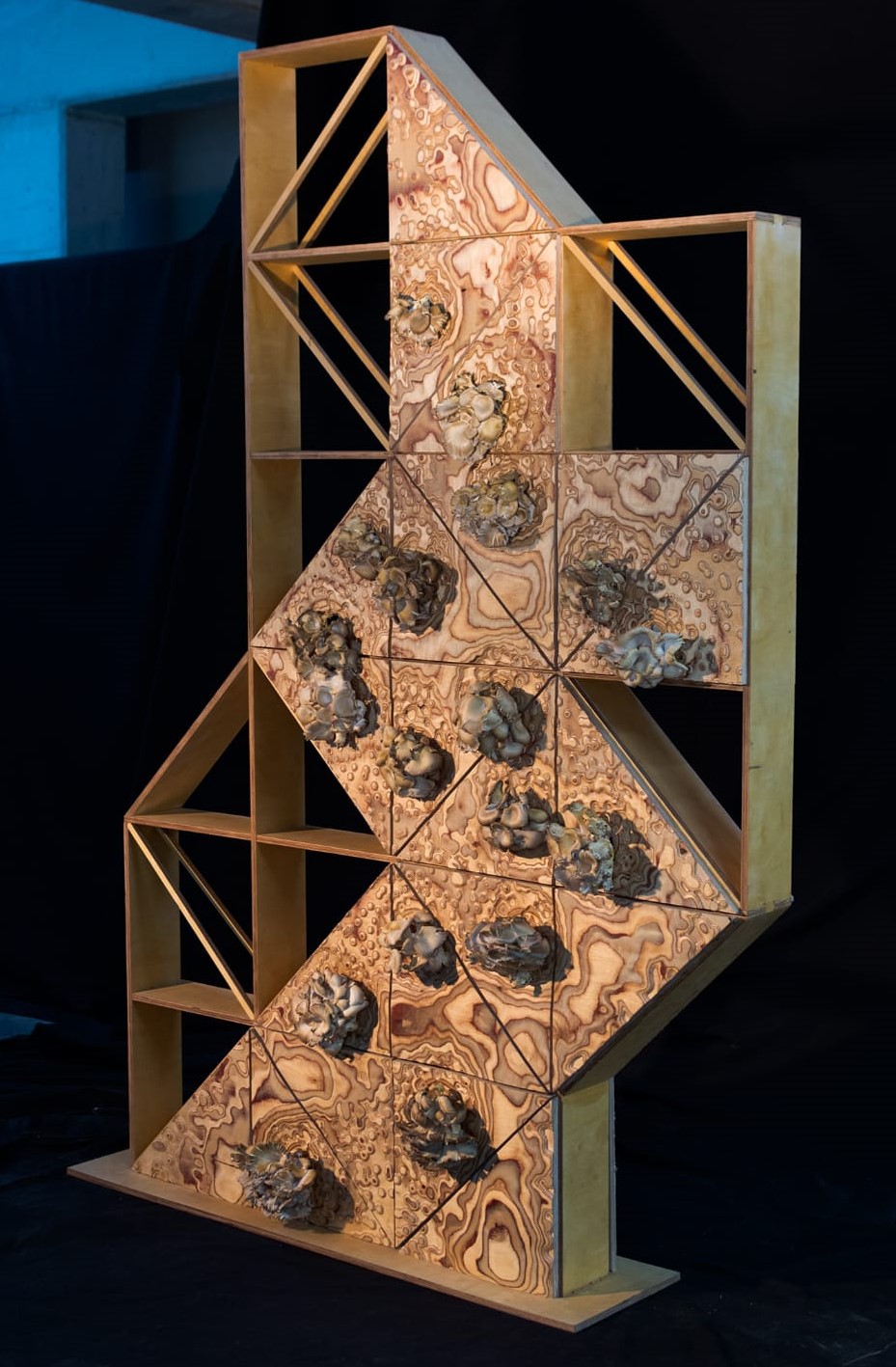Urban Mushroom Farm
CHALLENGES ADDRESSED
Score impact
Nature
Wellbeing
Health
Mobility
Participation
Economy
DESCRIPTION
The urban mushroom farm is a modular system developed to grow edible mushrooms in the urban environment, producing both food and construction materials. The solution is composed by modules that are designed with two main aims: allocating the substrate needed to grow mushrooms and shaping the construction material that can be obtained from it.
The surface of the modules is designed according to the climatic conditions of the installation site (e.g. solar radiation and humidity) to provide the optimal environment for the substrate to grow the mushrooms. With the aim of being as sustainable as possible, the modules can be also fabricated with ecological or recycled materials.
In addition to producing food and construction material, the solution acts as a demonstrator, creating ‘culture of caring’ for locally produced food and awareness about the potentials of mushroom farming in cities.

[NBS Card] Urban Mushroom Farm
The urban mushroom farm is a modular system developed to grow edible mushrooms in the urban environment, producing both food and construction materials. The solution is composed by modules that are designed with two main aims: allocating the substrate needed to grow mushrooms and shaping the construction material that can be obtained from it.
The surface of the modules is designed according to the climatic conditions of the installation site (e.g. solar radiation and humidity) to provide the optimal environment for the substrate to grow the mushrooms. With the aim of being as sustainable as possible, the modules can be also fabricated with ecological or recycled materials.
In addition to producing food and construction material, the solution acts as a demonstrator, creating ‘culture of caring’ for locally produced food and awareness about the potentials of mushroom farming in cities.
INNOVATION ASPECT
• The substrate, once the mushrooms are grown, can be used as a sustainable construction material (e.g. bricks or insulation panels);
• Farming mushrooms in cities is a practice that is still not widespread;
• The solution is also a tool for social inclusivity since it can be maintained by local communities.
REPLICATION AND SCALABILITY
• Modules can be anchored to a blind facade or installed on a metal structure in the public space.
• The installation, being modular, is highly replicable and scalable;
• The solution can be replicated in areas where in a certain period of the year there is an external temperature between 15 ºC and 20ºC.
PARTICIPATION PROCESS

-
1
CO-DIAGNOSTIC
What is the agricultural map of the neighborhood? Through “cultural mapping” the existent agricultural fields in the neighborhood can be identified. Where to place it? Through “walkthrough with citizens / focus groups in situ” it can be decided where the solution will be located within the neighborhood. How to manage the needs and expectations of citizens? Through “motivational interviewing”. How investigate the perception of technology? Through “cultural mapping” .
-
2
CO-SELECTION & CO-DESIGN
Which design to give? Through model thinking (Physical and 3D models) / world café. What materials to use? Through model thinking (Physical and 3D models) / world café.
-
3
CO-IMPLEMENTATION
How can people learn to use it (knowledge transfer? Through community workshops. How to manage it? Through time bank / farmers markets network.
-
4
CO-MONITORING
How to monitor the system functioning? Through time bank.

